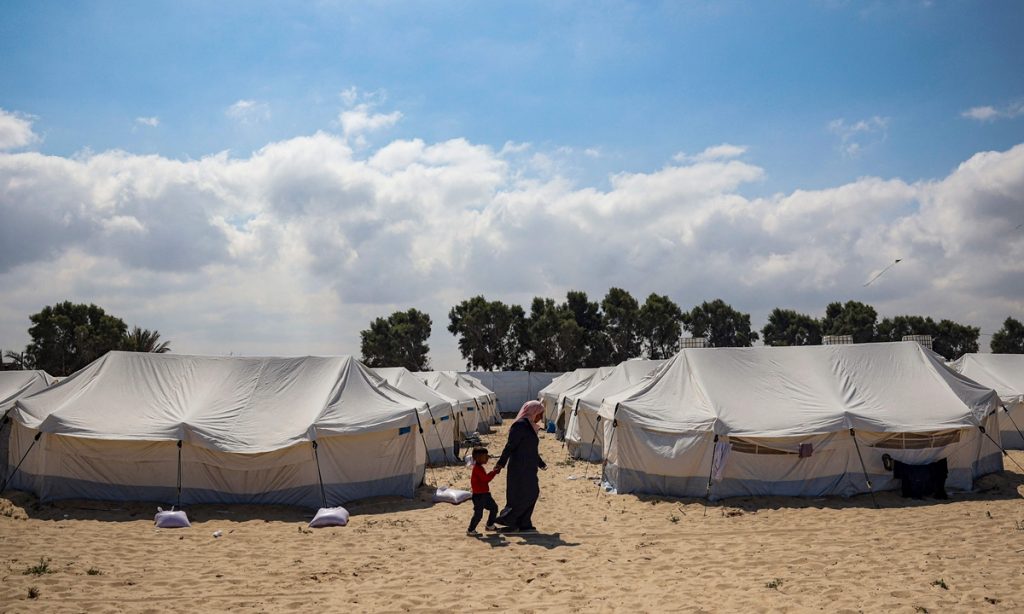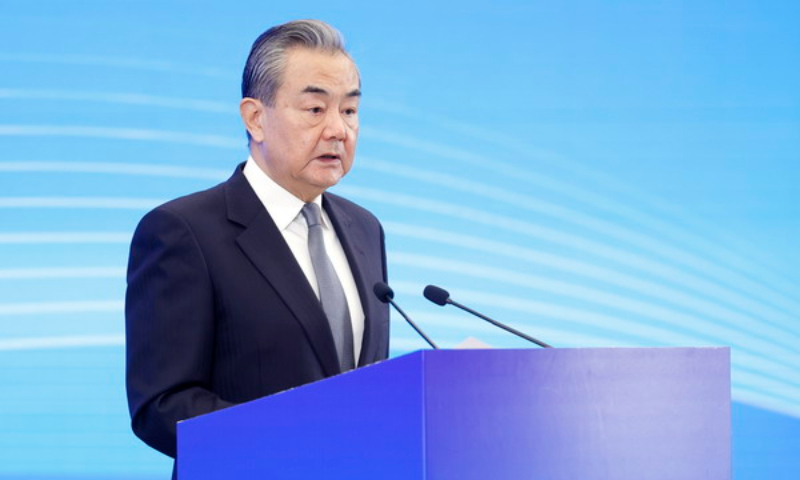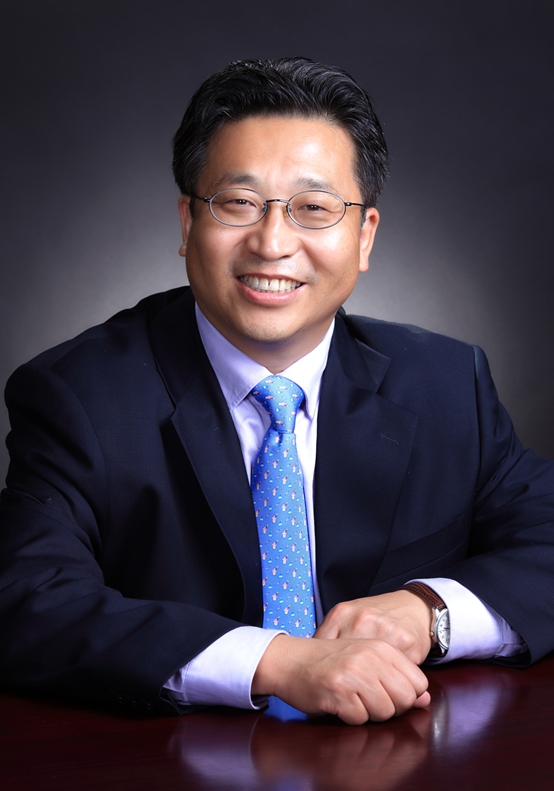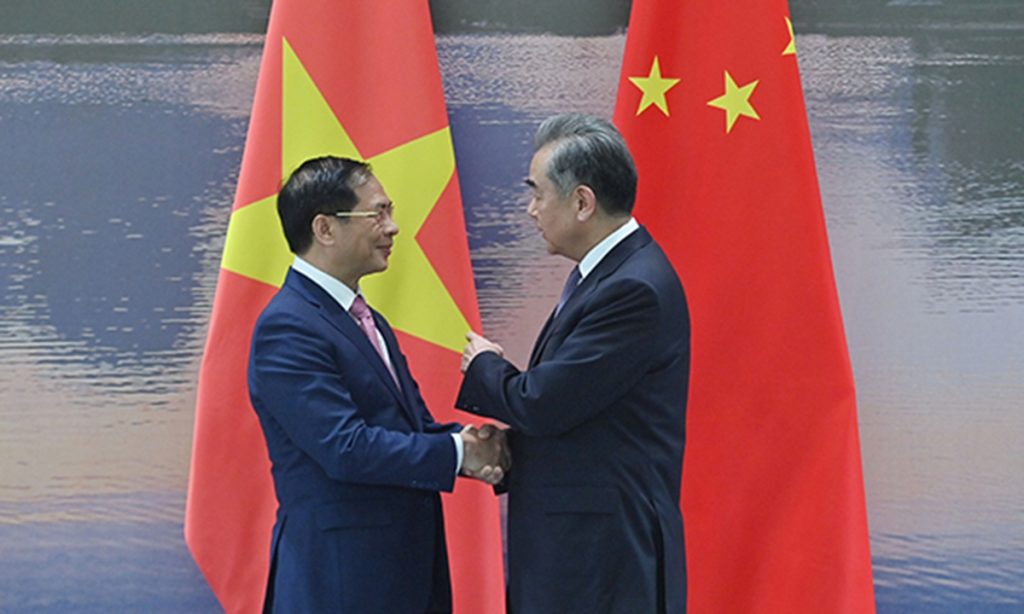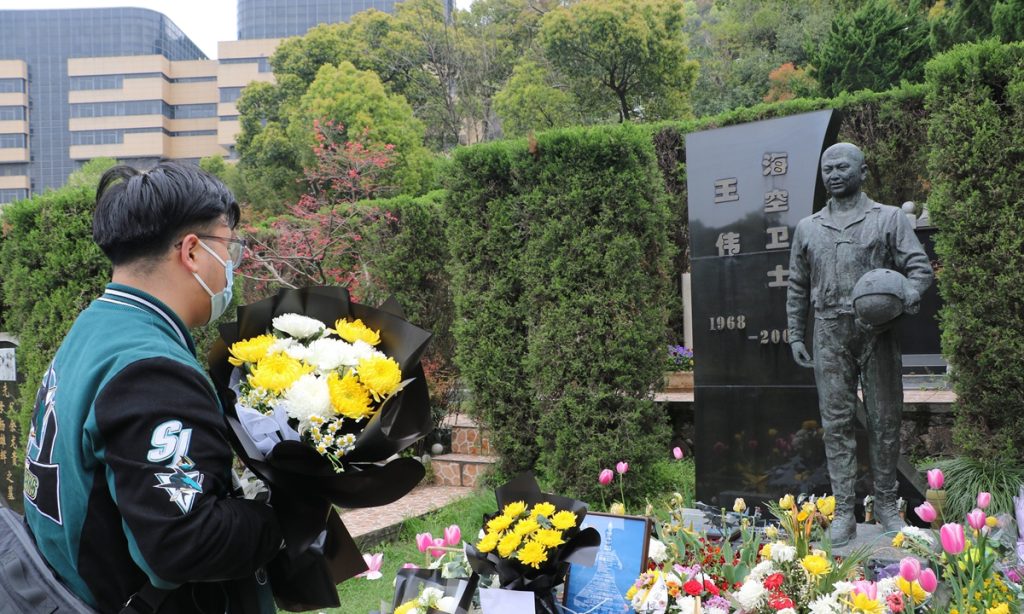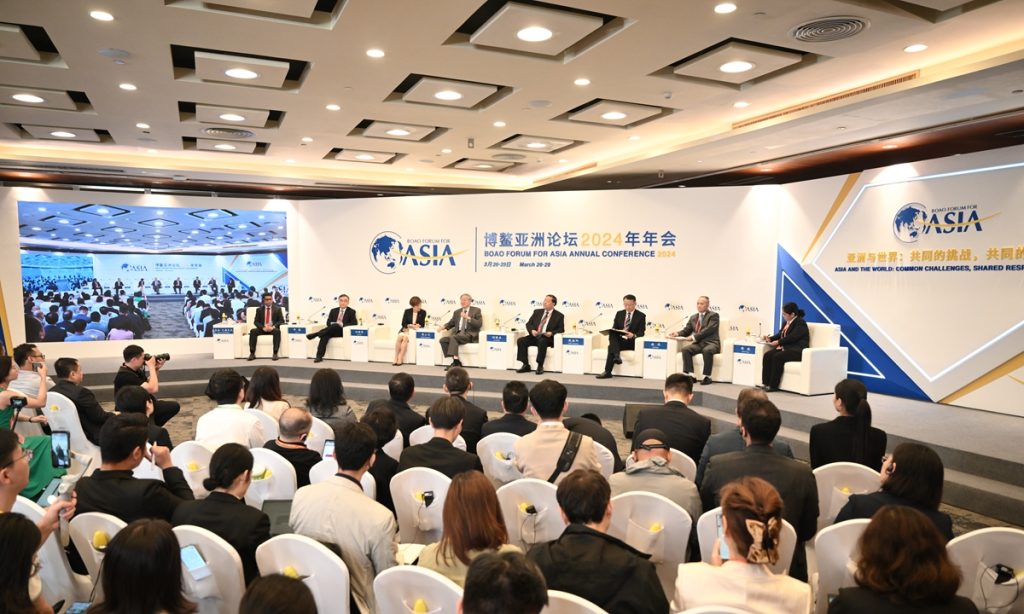Intl community calls for restraint amid Iran-Israel escalation fears
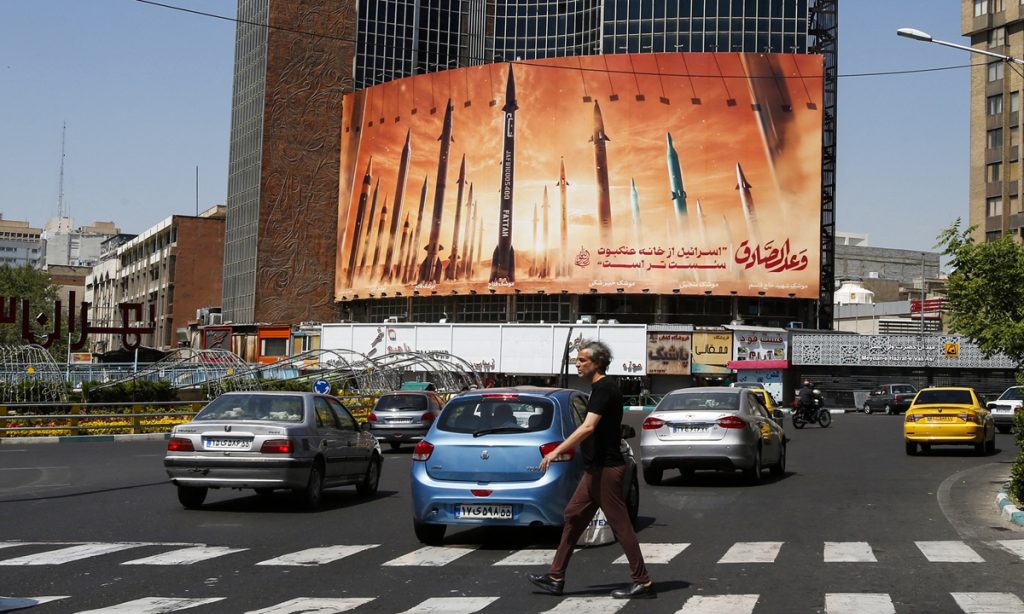
With sounds of explosions reverberating around central Iran on Friday morning, concerns of an all-out war in the Middle East are growing all over the world, as media reported that it was Israel that launched the strike, just a few days after Iran's first direct attack in retaliation to Israel's bombing of its diplomatic mission in Syria on April 1.
Israel was still silent on the incident as of press time, while Tehran seemingly downplayed it. Despite announcing sanctions on Iran, the Biden administration has distanced itself from the attack.
Analysts said although all parties seem to be avoiding escalation tacitly while maintaining their seeming toughness, the spillover effect of the Israeli-Palestinian conflict continues to ferment. Furthermore, US favoritism toward Israel makes it increasingly difficult for Washington to achieve its goal of controlling the Middle East through pursuing a strategic balance in the region.
ABC News earlier quoted an anonymous senior US official as saying that Israel had launched a missile attack against Iran. Quoting an Israeli official, the Washington Post said that it was Israel's military that carried out strikes inside Iran "in response to the Iranian retaliatory assault on April 13."
After the incident, Iran suspended flights in several areas including at Tehran and Isfahan airports, and activated its air defense, according to Iranian media. However, flight restrictions were lifted hours later, according to media reports.
Explosions were also found in a radar battalion in southern Syria and in the Al-Imam area of Babel, Iraq.
Lin Jian, a Chinese Foreign Ministry spokesperson, said at Friday's press briefing that China has noted the relevant reports and stressed that it opposes any action that further escalates tensions.
More and more countries called for restraint and de-escalation on Friday. G7 foreign ministers urged "all parties" to "work to prevent further escalation" in the region during a meeting in Italy, according to Al Jazeera.
European Commission President Ursula von der Leyen called on Iran, Israel and their allies to refrain from escalation in the Middle East.
Countries including France, Germany, UK, Russia, Netherlands, United Arab Emirates, Egypt, Turkey, Jordan and Sweden have also expressed their concerns and called for de-escalation.
UN Secretary-General Antonio Guterres said on Friday that "it is high time to stop the dangerous cycle of retaliation" in the Middle East.
Tacit agreement
In contrast to what US and Israeli officials claimed was a "drone and missile attack," the Iranian side is seemingly downplaying the incident.
Iran's Fars news agency said on Friday that "three explosions" were heard near the Shekari army airbase near Isfahan. The Iranian state-owned news network Press TV reported that there was "no sign of explosion or damage" at a nuclear site near the city of Isfahan.
Iran's space agency spokesperson Hossein Dalirian said on X that several drones "have been successfully shot down by the country's air defense, there are no reports of a missile attack for now."
Iranian state-run media IRNA news agency said on Friday that "reports indicate there was no major damage or large explosions caused by the impact of any air threat," which was also confirmed to state media by senior commander of Iran's Army Siavosh Mihandoust.
Moreover, a senior Iranian official, told Reuters on condition of anonymity, "We have not received any external attack, and the discussion leans more toward infiltration than attack." According to the official, the Iran side has "no plan" for immediate retaliation, and the external source of the incident has to be confirmed.
In a one-word post, Israeli security minister Itamar Ben-Gvir, who is regarded as far-right, wrote "Feeble!" on X, after Iranian military expert Ali Ahmadi described the attack as "far more limited than many expected" during a Friday interview with Al Jazeera.
According to Liu Zhongmin, a professor at the Middle East Studies Institute of Shanghai International Studies University, the latest attack reportedly launched by Israel was more symbolic than substantive.
Compared to Iran's retaliation against Israel's deadly bombing of the Iranian consulate in Damascus earlier this month, the latest strike has less intensity and scale, Liu said.
Wang Jin, an associate professor at the Institute of Middle Eastern Studies at Northwest University in Xi'an, said that Israel's target was not a nuclear site, but the airbase related to Iran's previous missile and drone attack, which makes it more likely that Israel's intention was to warn Iran by flexing its muscles over its military strike capability.
"Israel wants to show toughness without raising the stakes too high. There was no immediate offensive response from Iran either, and it even downplayed the incident," said Liu, "It's clear that both sides are curbing the conflict from escalating into all-out war through some tacit agreement."
While the situation is not yet out of control, experts also warned of the risks under the new pattern.
There are no direct channels of communication between Iran and Israel, said Wang, noting that the way the two countries understand each other's strategic intentions comes more from the practice of "you punch me, I kick you."
In a highly hostile situation, such a pattern could easily lead to the conflict spiraling out control when there's no international push for de-escalation, Wang said.
According to Liu, it was more of a covert war between Israel and Iran in the past that was not always seen in public. However, the latest round of clashes has become a direct military conflict between the two countries, highlighting a trend of escalation.
In addition, this round of conflict between Israel and Iran has extended the scope of the Palestinian-Israeli conflict from the eastern Mediterranean region to the eastern Persian Gulf region, which will affect the geopolitical stability there, Liu added.
If Iran decides to launch a counterattack later, there are basically two possibilities, according to Wang. One would be a direct long-range strike on Israeli soil, and the other would be what was most commonly used in the past, harassing Israel in border areas through Hezbollah, Houthis and Shia forces in Iraq and Syria.
A long-range strike on the Israeli mainland is unlikely to be adopted by Tehran as a countermeasure, as neither side wants the situation to spiral out of control and head toward a larger war, Liu said.
US' Mideast dilemma
Before the reported Israeli attack against Iran, the US and UK announced sanctions on Tehran in response to its missile and drone attack on Israel. According to Al Jazeera, the sanctions targeted 16 people and two entities related to drone productions and five companies that provide materials for steel production in Iran.
It also imposed travel restrictions on Iranian Foreign Minister Hossein Amir-Abdollahian.
However, analysts believed the sanctions are more of a symbolic gesture that will have very little substantial effect, and are only meaningful in pacifying Israel.
According to CNN and NBC, citing sources familiar with the matter, the US received advance notification on Thursday of an intended Israeli strike, but Washington did not endorse or play any part in the operation.
The Biden administration is facing mounting pressure from the international community to curb its support for Israel in the Gaza war, especially after Washington's representative once again and unsurprisingly vetoed the Palestinian request for full UN membership at Thursday's UN Security Council meeting.
The US wants to demonstrate its support for Israel by sanctioning Iran, while at the same time distancing itself from Israel and not wanting to get involved in a potential regional war triggered by the Israeli-Iranian conflict, Liu said, "It is a sign of deepening rifts between the US and Israel on specific issues."
According to Liu, Washington had been contemplating a strategic retrenchment in the Middle East, and did not even exclude the possibility of resuming nuclear negotiations with Iran. But with the latest escalation of the Israeli-Palestinian conflict and its spillover, none of this is possible anymore.
US favoritism toward Israel makes it increasingly difficult for Washington to achieve its goal of controlling the Middle East through pursuing a strategic balance in the region, Liu said.
The Biden administration is attempting to draw a red line for Israel to avoid bringing the whole region into war, but at this point, the US has virtually no way of effectively dictating the actions of all parties, Wang said.

